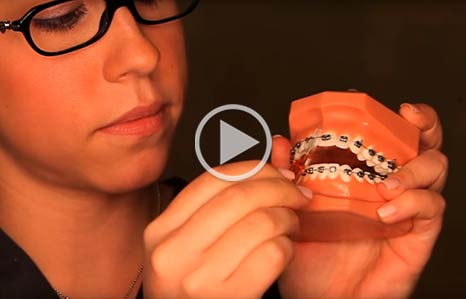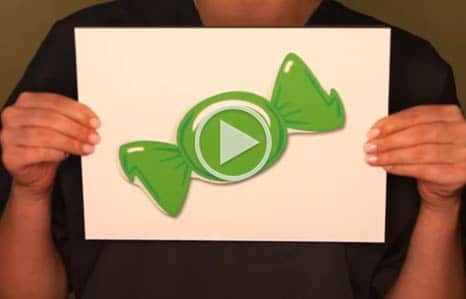Brushing and Flossing
When you have braces, it is super-important to keep your teeth and gums healthy throughout your orthodontic treatment. This requires regular brushing and flossing. Patients who do not keep their teeth clean may require more frequent visits to the dentist for a professional cleaning.
If you are an adult with a history of gum disease, you should also see a periodontist during orthodontic treatment to make sure your gums stay healthy enough to promote a successful treatment process. The video below will show you how to brush and floss while wearing braces.

Eating with Braces
What can you eat? Let’s talk about what you shouldn’t eat! For the first day or so, stick to soft foods. Avoid tough meats, hard breads, and raw vegetables. Before long, you’ll be able to bite a cucumber again. But you’ll need to protect your orthodontic appliances when you eat for as long as you’re wearing braces.

Foods to Avoid
- Chewy foods: bagels, hard rolls, licorice
- Crunchy foods: popcorn, ice, potato chips
- Sticky foods: caramels, gum
- Hard foods: nuts, hard candy
- Foods you have to bite into: corn on the cob, apples, carrots
Chewing on hard things (for example, pens, pencils or fingernails) can damage the braces, extending your treatment time!
General Soreness
When you get your braces on, you may feel general soreness in your mouth, and your teeth may be tender to biting pressures for 3 – 5 days. Over-the-counter pain reliever can be used for the discomfort. The lips, cheeks, and tongue may also become irritated for one to two weeks as they toughen and become accustomed to the braces. We will supply wax to put on the braces in irritated areas to lessen discomfort.
Loosening of Teeth
This is to be expected throughout treatment. Don’t worry — it’s normal! Teeth must loosen first so they can move. The teeth will firm up in the correct positions after treatment is completed.
Loose Wire or Band
Don’t be alarmed if a wire or band comes loose. This happens occasionally. If a wire sticks out and is irritating, use a blunt instrument (eraser end of a pencil) and carefully, gently push the irritating wire back under the archwire. Simply get it out of the way. If irritation to the lips or mouth continues, place wax or wet cotton on the wire to reduce the annoyance. A loose band or bracket can generally be left in place until seen in our office. Call our office as soon as possible for an appointment to check and repair the problem.
Rubber Band Wear
To successfully complete orthodontic treatment, the patient must work together with the orthodontist. The teeth and jaws can only move toward their corrected positions if the patient consistently wears their rubber bands or other appliances as prescribed. Lack of compliance and/or damaged appliances will lengthen treatment time.
Athletics
If you play sports, it’s important you let us know! A protective mouthguard is provided for playing contact sports.